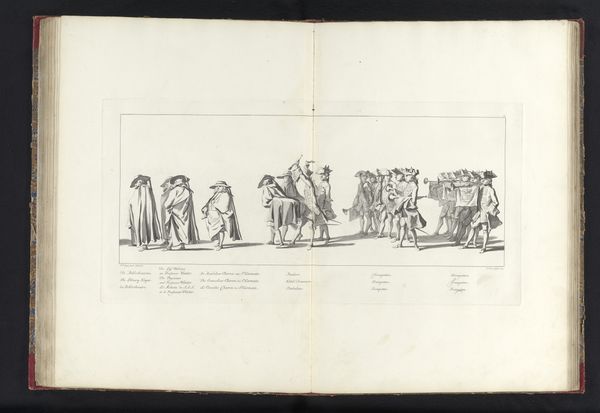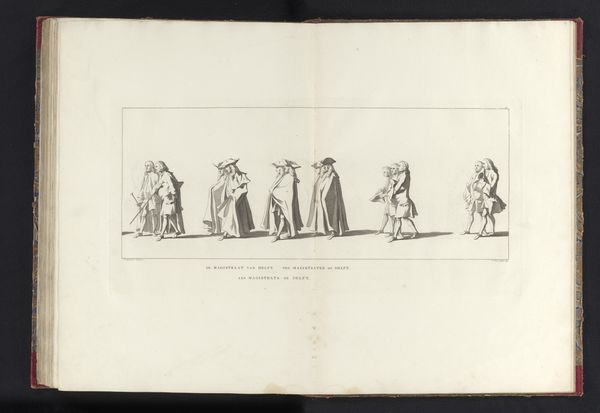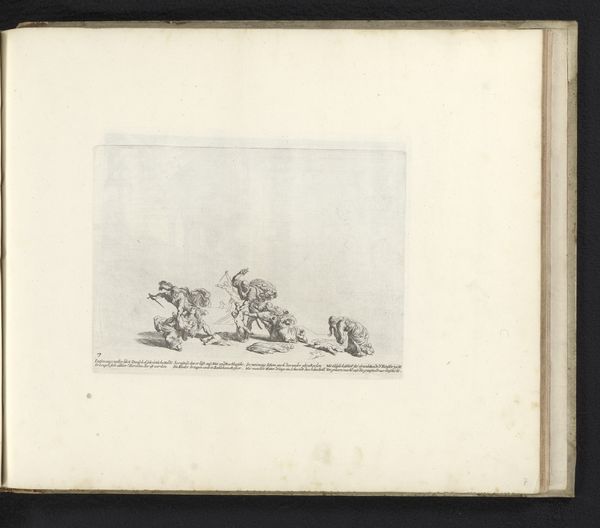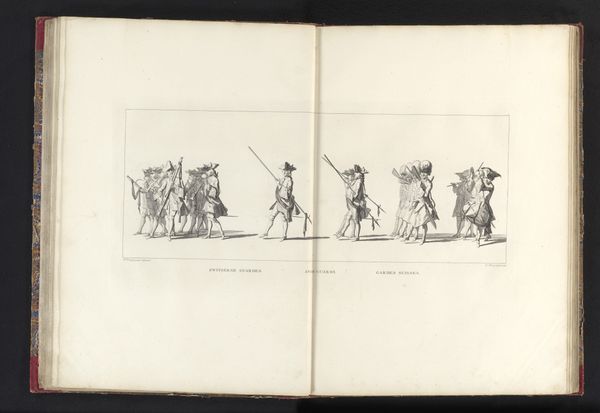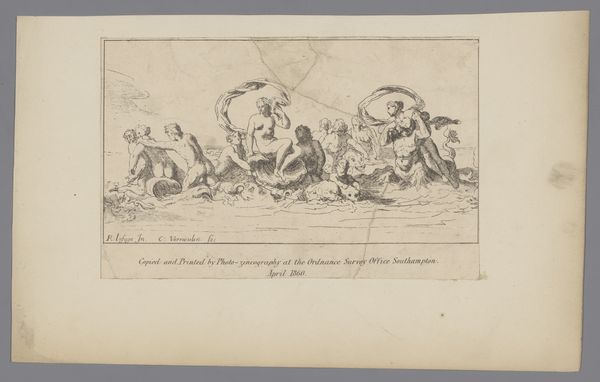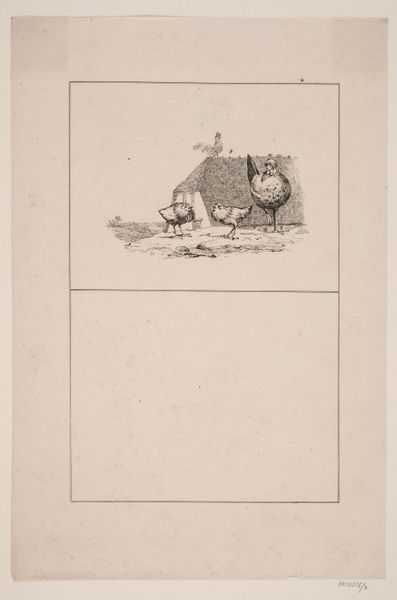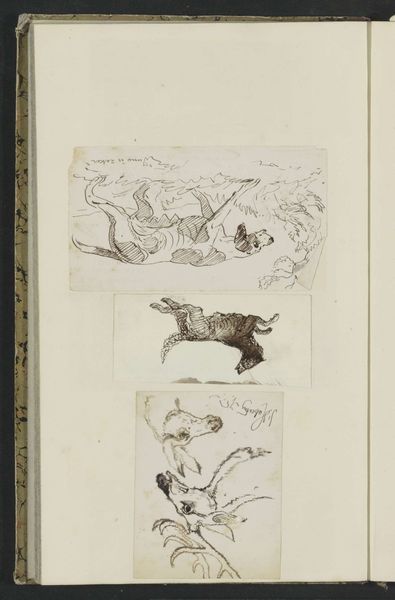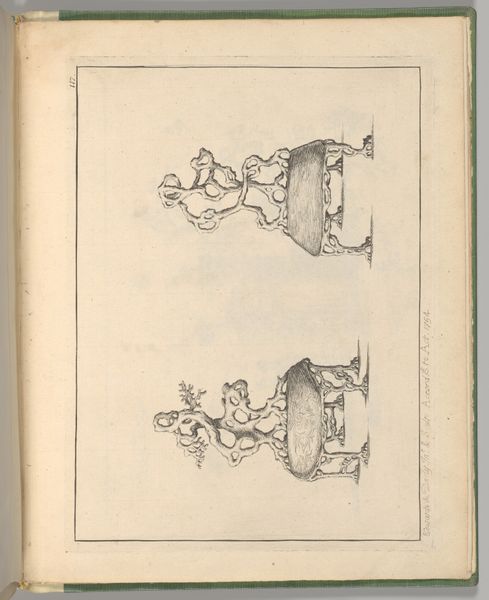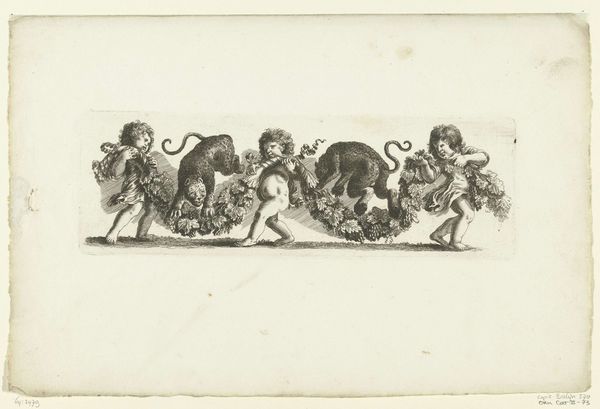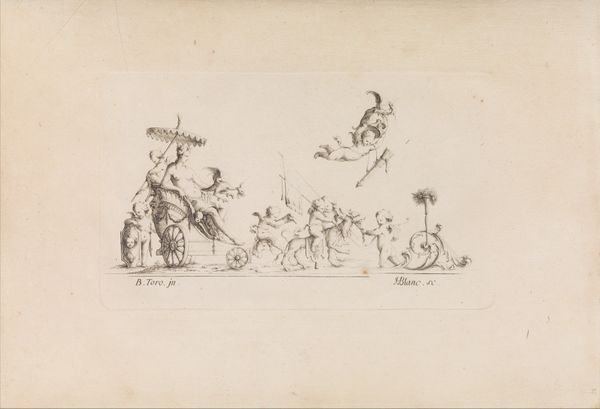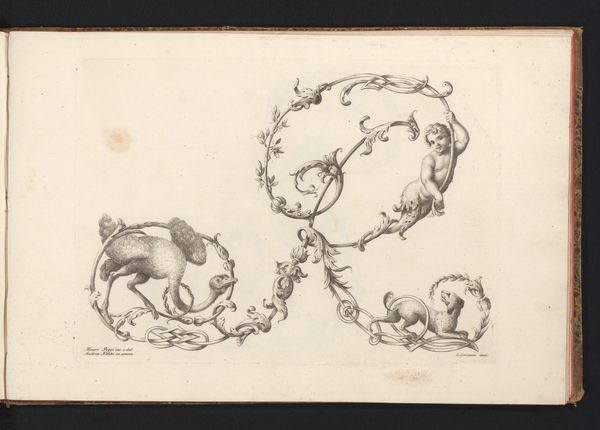
drawing, print, ink, engraving
#
portrait
#
drawing
#
baroque
# print
#
pen sketch
#
ink
#
history-painting
#
engraving
Dimensions: height 270 mm, width 560 mm
Copyright: Rijks Museum: Open Domain
Editor: This is plate 11 from "Lijkstatie van Willem IV," dating from 1752 to 1755, created by Jan Punt. It appears to be an ink and wash drawing, an engraving capturing a historical procession. The linear, repetitive figures give it a strangely somber, almost ghostly feel. What do you make of its depiction of power and ritual? Curator: Indeed. It’s fascinating to consider this work in relation to the performance of power. Willem IV’s funeral was, of course, a major political event. Engravings like this one, widely disseminated, served a crucial function. Think about it: how else would people, especially those outside the immediate circle of power, witness and internalize the grandeur of the monarchy? This isn't simply documenting an event; it's crafting a narrative about the legitimacy and enduring strength of the House of Orange. The artist meticulously depicts the regimented formations of soldiers. Does this emphasize the order that a strong leader is supposed to bring? Editor: So, it’s about controlling the narrative and projecting stability, even in death? Curator: Precisely! And consider the baroque style. While visually opulent, was it simply celebratory? Or, as a tool for rulers like Willem, did it communicate permanence? It projects the image of a divinely ordained and historically continuous reign. Now, what about the choice of engraving, as a print medium? How does that contribute to our understanding of the art in relation to social structure at that time? Editor: Well, printmaking allowed for mass production. This image could reach a wider audience than a painting ever could. This funeral representation must have aimed at the commoners to see and recognize that Willem’s reign persists beyond his death. Curator: Exactly! This was key for sustaining political support. And it underscores the importance of visual culture in shaping public perception during this period. I think recognizing art as a propaganda tool, especially concerning political figureheads like Willem IV, unveils its role in perpetuating a certain social and cultural structure. Editor: I see that art had a lot more to do than merely decorate or show off an artist's mastery, and was tied up with political interests of that period. Thanks for this insightful analysis. Curator: My pleasure.
Comments
No comments
Be the first to comment and join the conversation on the ultimate creative platform.
